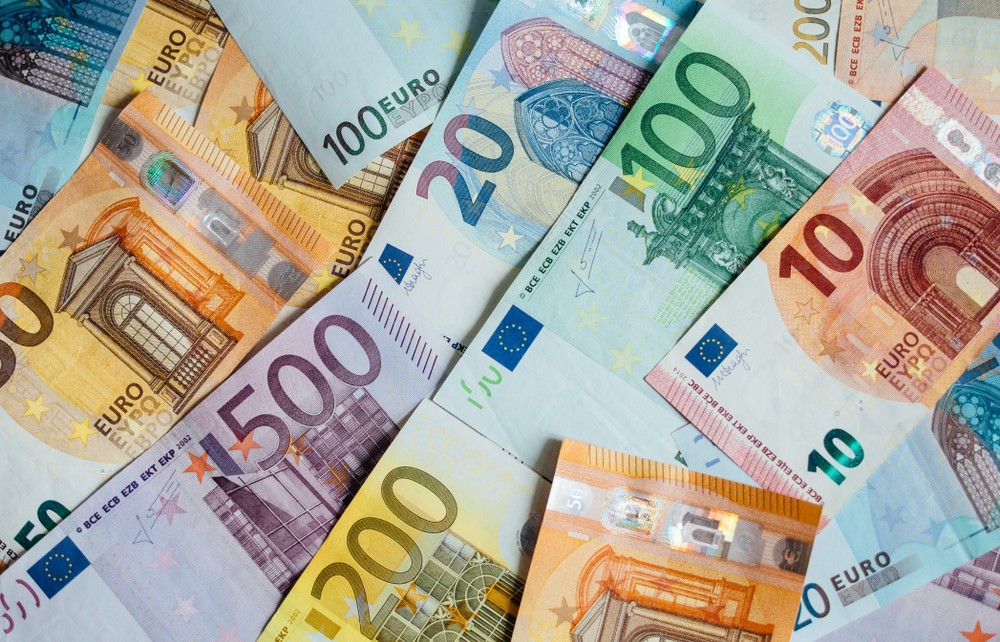Higher money growth does not yet herald an imminent acceleration of euro area inflation


Since the outbreak of the coronavirus recession, money circulation in the euro area has suddenly increased sharply. In principle, additional money creation could pave the way for higher inflation. But the recent surge in money growth is not yet a sign of an imminent acceleration in inflation. It reflects the substantial debt creation used to stabilise the economy during the coronavirus shock. In order to create inflation, money must also be spent. This requires a lasting restoration of confidence among families and businesses. As long as the coronavirus is circulating, that is unlikely. Families will probably continue to ‘hoard’ their money for some time, while companies will continue to invest cautiously. It seems more likely that money growth will slow down again than that it will quickly drive up inflation.
Money growth spikes...
Since the outbreak of the coronavirus recession, money circulation in the euro area has risen sharply. The growth rate of money supply in the narrow sense (M1, i.e. notes and coins in circulation and sight deposits with banks of households, businesses and financial institutions other than banks) has risen from 7.9% (year over year) in January 2020 to 13.5% in July. This is the strongest growth since the creation of the euro area in 1999 (figure 1). Growth in the money supply in the broad sense (M3, which includes short-term bank deposits and securities in addition to M1) almost doubled from 5.2% in January 2020 to 10.1% in July.
The strong increase in money growth should sound like music to the ears of the European Central Bank (ECB). Its policy also considers inflation to be a monetary phenomenon. In other words, long-term inflation is determined by the amount of money in the economy. As long as enough money is put into circulation, inflation will sooner or later accelerate. At present, the ECB’s target inflation rate is just under 2%. But since 2013, inflation in the eurozone has averaged barely 0.9%. In August 2020, it even fell below zero (-0.2%).
In order to drive inflation towards its target, the ECB has been pursuing a very expansive policy for some time now with numerous exceptional instruments. The fact that there has been no sustained acceleration in inflation in spite of this is due to the fact that for a long time the policy has not led to an increase in money growth. After an initial acceleration, the growth rate of the money supply in the broad sense (M3) stabilised around 5% since 2015, while the growth of the narrow money supply (M1) even decelerated on a trend basis. But in recent months there has been a turnaround (figure 1).
... thanks to the increase of credit
This turnaround is, to a large extent, a result of the substantial debt creation used to stabilise the economy during the coronavirus crisis. Figure 2 illustrates the parallel course of credit take-up and deposit growth of businesses. By granting loans, banks create deposits. 60% of the broad money supply in the euro zone consists of sight deposits. Businesses took up more credit mainly in March and April and parked the money in their current account. In this way they strengthened their liquidity buffer during the lockdown. In the summer there was still a slight increase in deposits from businesses. This suggests that they did not have to use their liquidity buffers immediately.
Figure 3 shows that households’ deposits also increased considerably in the first half of the year. During the lockdown, this reflected their limited opportunities for consumption, while the government’s stabilisation policy ensured that family incomes were largely safeguarded, for example through systems of temporary unemployment. Part of the rising budget deficits thus ended up in households’ current accounts and accumulated there due to a lack of consumption opportunities. Meanwhile, additional purchases of government bonds by the ECB ensured smooth financing of the sharply rising public debt. After the lockdowns, household deposits continued to increase, despite the resumption of household consumption. This was supported by the catching up movement in the take-up of home loans.
Good news for inflation?
If all that extra money is further converted into consumption and investment, it could give a powerful boost to the economic recovery and finally bring about more inflation. The coronavirus crisis would then ensure that the realisation of the ECB’s objective is finally within reach. But that is far from certain.
The newly created money is the result of debt accumulation that served to stabilise the economy. Families can also continue to hoard the money, for fear of, for example, unemployment or future fiscal consolidation. If so, it will not cause more inflation. Without a recovery in demand, more and more businesses will run into financial difficulties and find it more difficult to obtain credit. There will be no investment, so the demand for investment credit will not recover either. The impulse of money growth will then quickly fade and perhaps even reverse.
A strong restoration of confidence among consumers and businesses can prevent this from happening. But as long as the coronavirus is circulating, that is unlikely. The recent acceleration in money growth is therefore not yet a herald of an imminent acceleration in inflation.
1 The ECB is currently reviewing its strategy. This will be the subject of a forthcoming KBC Economic Opinion.
2 See also KBC Economic Opinion of 5 October 2020.
